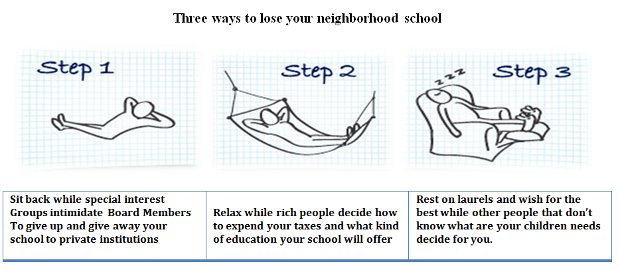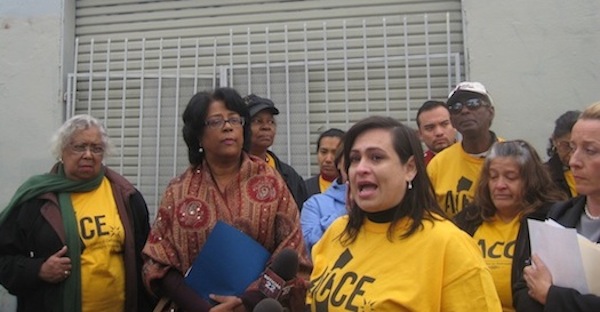
Councilwoman Jan Perry today joined local residents and members of the Alliance of Californians for Community Empowerment (ACCE) in a press conference to celebrate the imminent closure of Palace Plating, the chrome plating facility that City officials found responsible for releasing toxic chemicals into the environment surrounding 28th Street Elementary School.
“It’s an industrial use facility that was grandfathered in, that never should’ve been grandfathered in an area where people are actually living or going to school,” says Perry. “We had a cancer cluster here. They were putting people’s health at risk.”
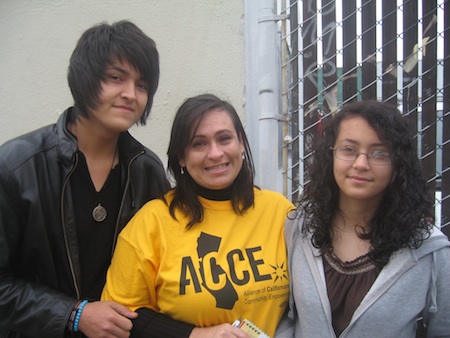 Martha Sánchez, middle, with her children, Gonzalo and Catherine Romero. Martha Sánchez, middle, with her children, Gonzalo and Catherine Romero. |
That’s what Martha Sánchez set out to prove eight years ago, when her children, who were attending 28th Street Elementary School, right across the street from the plant, started getting sick. Parents complained to health officials, city inspectors and their elected officials. Finally, they took their case to court.
It was a lengthy and difficult battle, but now parents, teachers and students are relieved that a judge ordered Palace Plating, which has been in the area for over 40 years, to permanently shut down by December 31.
“We have to change the way companies like this one operate,” declares Martha. “About ten teachers have died from cancer in the past few years.” Among them she points out Adrian Guillén, who died from pancreatic and Leticia Herrera, from lung cancer.
“We should change the cancer awareness pink ribbon to green – so people start using green technology and not allow for companies to use cancer causing toxic chemicals.”
Two of Martha’s children, Gonzalo, 17 and Catherine, 12, were among the 28th Street Elementary students who suffered from the air and ground contamination.
“I would get sick really easily. My nose was bleeding every night and I would vomit almost every day,” remembers Catherine.
Her brother Gonzalo, who says he also experienced a series of health problems, beams with pride about his mom’s accomplishment. “She’s awesome. She’s my role model. She’s an example that if you fight for a cause, anything’s possible.”
Sánchez is relieved the plant’s closing, but she’s still concerned for her children’s health. “They’re healthy now, but I’m worried about their health in the future. After all, they were exposed to the chemicals.”
Among the hazardous chemicals being released by the plant: chromium, which was found in the City’s sanitary sewer system, tetrachloroethylene, a cleaning solvent that was impacting the air quality in and around the 28th Street Elementary School, and cadmium and chromic acid.
In a settlement with the City of L.A. earlier this month, Palace Plating agreed to remediate all contamination, cease its business operations by December 31, 2011, remove all on-site hazardous waste and pay $750,000 to LAUSD in restitution for costs associated with contamination at the 28th Street Elementary School.
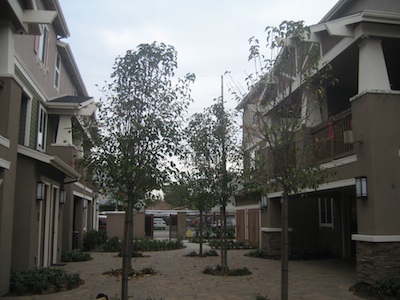 Now, Councilwoman Perry says, the community has to focus on the next phase of neighborhood improvements. “We’re building 550 units for rental and housing for sale, retail space and creating open green space. We’re going to transform this area forever.”
Now, Councilwoman Perry says, the community has to focus on the next phase of neighborhood improvements. “We’re building 550 units for rental and housing for sale, retail space and creating open green space. We’re going to transform this area forever.”
Just down the street, construction has recently finished on “The Crossings,” an affordable housing complex built by the Urban Housing Communities, which will have its grand opening in January.









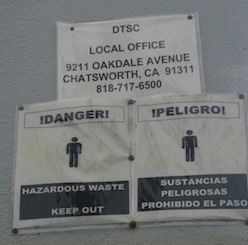
 Palace Plating, the chrome plating facility responsible for releasing toxic chemicals into the environment surrounding 28th Street Elementary School, will permanently shut down by December 31, putting a six year-old lawsuit against the company to an end.
Palace Plating, the chrome plating facility responsible for releasing toxic chemicals into the environment surrounding 28th Street Elementary School, will permanently shut down by December 31, putting a six year-old lawsuit against the company to an end.  At the community meeting where city officials informed Sánchez of the carcinogenic chemicals being released, she voiced her concerns. “When I put my kids in this school, they started complaining about a lot of things that I think are related to these chemicals.”
At the community meeting where city officials informed Sánchez of the carcinogenic chemicals being released, she voiced her concerns. “When I put my kids in this school, they started complaining about a lot of things that I think are related to these chemicals.”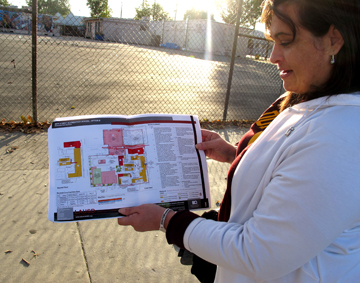 Sánchez says she took the evidence she collected to the health department and other city agencies asking them to start an investigation. She says they told her the evidence she produced was not reliable and she didn’t have the legal authority to make the claims. That’s when Sánchez began to contemplate legal action.
Sánchez says she took the evidence she collected to the health department and other city agencies asking them to start an investigation. She says they told her the evidence she produced was not reliable and she didn’t have the legal authority to make the claims. That’s when Sánchez began to contemplate legal action.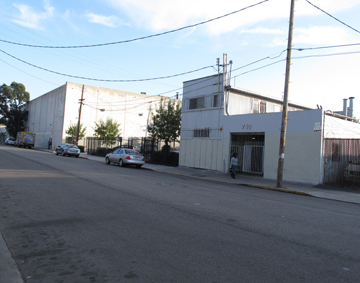 Feeling they had run out of options, Sánchez, about 50 families, and over a dozen teachers eventually filed a lawsuit against the school.
Feeling they had run out of options, Sánchez, about 50 families, and over a dozen teachers eventually filed a lawsuit against the school. 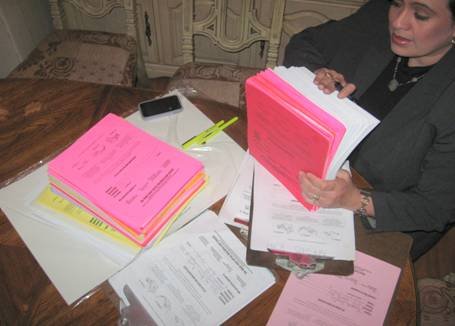 Twenty-Eighth Street Elementary School is one of the most overcrowded schools in the LAUSD. The school was built in 1800s to accommodate a maximum of 800 students. In 2003, it housed over 2,300 students turning the school calendar in to a
Twenty-Eighth Street Elementary School is one of the most overcrowded schools in the LAUSD. The school was built in 1800s to accommodate a maximum of 800 students. In 2003, it housed over 2,300 students turning the school calendar in to a  Therefore we decided to organize a grass-roots effort to involve most of parents at 28th St. School. On January 22, 2010, I began a campaign to organize and obtain the authentic opinion and desires from parents about who they want to control school site #18.
Therefore we decided to organize a grass-roots effort to involve most of parents at 28th St. School. On January 22, 2010, I began a campaign to organize and obtain the authentic opinion and desires from parents about who they want to control school site #18. 